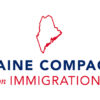HIGH-SKILLED IMMIGRANTS IN UTAH
Date: May 11, 2015
Learn more about the need for high-skilled immigration reform at www.LetPJStay.com
UTAH FACES A LARGE STEM SHORTAGE
- There are more STEM job openings than unemployed STEM workers: From 2009 to 2011, 1.5 STEM job openings were posted online in Utah for every 1 unemployed STEM worker in the state.
- As STEM fields grow, this problem will likely get worse: Utah will need to fill 81,200 new STEM jobs by 2020.
- The healthcare industry in particular will be affected by a shortfall of STEM workers: Researchers estimate Utah will be short 10,416 registered nurses by 2030, and the Utah Medical Education Council found that Utah will need 332 additional doctors per year to adequately treat the state’s population, which is quickly aging.
- Utah’s healthcare industry fairs poorly when compared to other states: Utah ranks 46th in the United States when it comes to the number of doctors per capita.
IMMIGRANTS ARE FILLING STEM SHORTAGES IN UTAH
- Immigrants are more likely to study STEM than the native-born: Immigrants are 8.4 percent of Utah’s population, but in 2009, 29 percent of the students earning master’s or PhD degrees in STEM fields from Utah’s research-intensive universities were foreign-born.
- Immigrants are a growing percentage of the STEM workforce: In 2010, 20 percent of STEM workers with an advanced degree in Utah were foreign-born – almost double their share of the STEM workforce 10 years earlier.
- Immigrants play a critical role in the healthcare industry: In 2012, 8.9 percent of physicians in Utah had graduated from a foreign medical school, a population that is overwhelmingly immigrant.
HIGH-SKILLED IMMIGRATION REFORM WOULD HELP UTAH’S COMPANIES COMPETE AND CREATE AMERICAN JOBS
- High-skilled visa holders create jobs for U.S.-born workers: The new H-1B visas awarded to Utah between 2010 and 2013 will translate into 1,662 new jobs for U.S.-born workers in the state by 2020.


